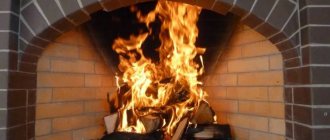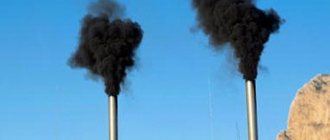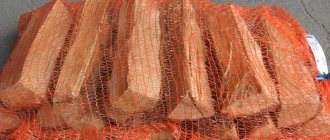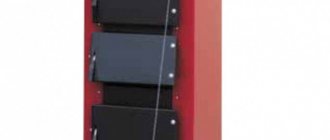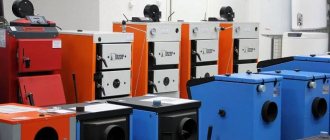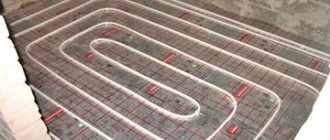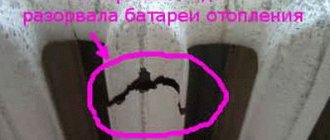Despite the fact that there is a wide choice of heating systems, many homes still have wood stoves and fireplaces. And even if gas heating appears, the owners of the house do not part with their favorite stove.
There is something primitively attractive in these living flames, the crackling of firewood, in the special atmosphere of warmth and smell emanating from the stove. And even its difficult maintenance, preparation of firewood and kindling are justified by this. In order to get high-quality heat and a pleasant specific aroma, you need to choose the right firewood.
Spruce
Many woodworkers wrinkle their noses at the mention of spruce because its heat output is usually low and it burns to ashes without leaving any embers.
But this variety of trees still occupies its niche among wood suitable for use as firewood. Spruce burns easily and produces heat quickly, so it is excellent if you need to quickly warm up a cold house. In addition, thanks to its structure, it is easier to chop spruce into small chips, and no supply of firewood would be complete without spruce chips for ignition. So-called firewood for baking in special ovens is often made from finely chopped spruce (or aspen) precisely because such firewood burns quickly and evenly. By adding small amounts of spruce wood frequently, every three to five minutes, you can maintain complete control over the heat. Previously, spruce firewood was called kitchen firewood, but birch firewood was called firewood for the living room.
According to the old Norwegian tradition, the fireplace was heated with spruce wood at Christmas. The Christmas bundle - a small woodpile that was specially prepared for Christmas and kept inside the house - was traditionally made from spruce logs. Many made it from damp wood for the sake of the smell and did not burn it with this wood until Easter.
Spruce has a fairly dense internal structure. This makes the wood crackle and bounce as the resin pockets explode in the fire. Therefore, it is better to use them in a stove or fireplace with a glass door. Many people like this crackling sound - it gives a feeling of life in the fireplace.
Due to the great demand for birch firewood, loggers often sell spruce firewood quite cheaply. The difference in price turns out to be much higher than the difference in heat output. On average, the density of spruce is 380 kilograms per cubic meter, possible variations are from 300 to 600 kilograms. Late spruce is heavy and full of energy.
Alternative fuel materials
The calorific value of certain types of firewood is quite high, but far from the maximum possible. In order to save money and space for storing heating material, today more and more attention is being paid to alternative options. It is optimal to use pressed briquettes.
The efficiency of using briquettes is several times higher than that of firewood
For the same oven load, pressed wood produces much more heat. This effect is possible by increasing the density of the material. In addition, there is a much lower percentage of humidity. Another plus is minimal ash formation.
Briquettes and pellets are made from sawdust and wood chips. By pressing waste, it is possible to create an incredibly dense combustion material that even the best types of wood cannot compare with. With a higher cost per cubic meter of briquettes, the final savings can amount to a very significant amount.
It is necessary to prepare and purchase combustion materials based on a thorough analysis of their properties. Only high-quality firewood can provide you with the necessary heat without causing harm to your health or the heating structure itself.
Tags: firewood, property, poplar
« Previous entry
Which ones are best for the oven?
Any wood can be used as fuel. The main thing is that they exist. Each region has its own preferences, depending on what trees grow in the area. Many people believe that birch or alder are the best. The choice is yours.
To the bathhouse
The choice of logs for heating a sauna depends on the design of the stove. Many people prefer:
- Alder. They produce a persistent heat and burn almost smokelessly. There is a popular belief about their healing power;
- Birch. Burns evenly, the heat is strong;
- Willows. The heat transfer is low, you will need a lot of them, but the spirit in the bathhouse will be especially light.
It is not recommended to use oak ones - they take a long time to burn out, the heat is intense, and they emit a large amount of carbon monoxide. Periodically, aspen is used to clean the chimney. If the furnace firebox is remote, the main selection criterion is heat transfer.
For home heating
Hardwood firewood has the best qualities and is used more often. Birch, oak, linden - any, depending on their availability and needs. The main thing is to be dry. In fireplaces it is better to use those types that smoke less and do not “shoot”.
Heating with wood can be caused either by necessity - due to the lack of another type of fuel, or by personal desire. Logs burning in the oven create an unsurpassed atmosphere of warmth and comfort, emit a lot of heat, and for the most part provide a healing effect.
Video description
See the video for what improper storage leads to:
For fireplaces and pyrolysis stoves, it is advisable to further dry the fuel by keeping it in a warm and dry place for several days. The “cleaning” firewood – aspen and alder, used for cleaning chimneys – should also be well dried.
It is advisable to harvest oak in advance and put it into use after a year or two - this is the time it takes for the wood to dry. Birch, on the contrary, is used in the year of purchase. Linden is stored for no longer than 2-3 years if you want to enjoy its amazing aroma in the bathhouse.
Subtleties and nuances
- The worst thing is if you have damp aspen firewood. This type of wood produces a small amount of heat, so aspen firewood will be very difficult to light. The logs will slowly smolder when exposed to temperature, releasing very little heat.
- A good option for quickly kindling raw logs is birch or spruce. Despite the fact that these tree species emit a lot of soot and soot when burned, they are optimal for quick kindling. The fire catches on the chips and birch bark in literally a matter of seconds.
- An original way to quickly dry wood was invented by our ancestors. Salt should be poured in large quantities onto wet firewood. The salt will draw out some of the moisture, and the firewood will become usable.
- If we light a fire in nature and we have flammable liquids in our arsenal, for example, diesel fuel, gasoline, kerosene, then it is quite possible to pour these compounds on the wood chips. If we want to use flammable liquids in the stove, we can moisten a rag with them and place it between the logs. The characteristic odor from such liquids will disappear fairly quickly after lighting a fire.
- Some experts recommend putting an empty bottle of vegetable oil in the firebox. With its help you can quickly get the required amount of fire.
Please note that firewood is always purchased raw. It is best to do this in winter, stocking up for the next season, when equipment easily enters the forest. In this case, you will have the firewood for a whole year before using it. They must be stored in a woodpile, protected from precipitation and blown by the wind.
As you can see, there are no particular difficulties with kindling raw firewood; the main thing is to approach this issue thoughtfully and carry out the preparatory work efficiently. With a little patience, you will have a nice, intense fire that provides warmth.
Questions and answers
Is it possible to burn a stove with willow wood?
In principle, the stove can be heated with any dry wood, willow is no exception. Such firewood burns out quickly, but produces a lot of heat. It makes sense to use them with other firewood.
Why can’t you heat a stove with used sleepers?
There is a joke: “good firewood is free firewood.” But not in the case of used sleepers. The fact is that they are impregnated with creosote, a mixture of phenols that are harmful to humans.
Will American maple firewood make good wood?
This plant has filled the cities and has already reached villages. But it is not advisable to use it for firewood, since it has little heat transfer. Moreover, in order to use it to light the stove, American maple must be dried for a long time; this tree is very saturated with moisture. Yes, and it is difficult to split it.
When is it easier to chop wood? Fresh or when they dry out?
It is better to chop birch firewood when it is freshly cut, and spruce firewood when it is dried out.
Why is it not advisable to burn with raw wood?
Wet firewood contains a lot of moisture, and during combustion, thermal energy is spent on evaporating moisture rather than heating the room. That's why you'll have to spend more firewood. In addition, the temperature released from the combustion of raw wood will be lower.
Wood Density
Of course, in a pinch, any kind of firewood is suitable, including that obtained from a broken wooden box. But if we are talking about constant heating, then it is better to choose wood species characterized by the highest heat transfer. The heat transfer coefficient depends on several factors, including the density of the material.
Hardwoods are the same ones that are widely used in construction and decoration: oak, birch, beech. The greatest heat transfer is characteristic of oak, but since oak belongs to the category of valuable wood species, it is rarely used as fuel
It is worth paying attention to birch trees: birch produces 18% more heat than pine, and 25% more heat than aspen. This is ideal for the oven
- Medium-hard - these include coniferous species - spruce, pine, larch, and fruit tree species - apple, pear. Logs made from them provide less heat, but flare up quickly and spread a wonderful aroma.
- Soft ones - alder, aspen, are characterized by low heat transfer, but, due to the low moisture content, they burn with almost no soot formation. Such firewood is perfect for a fireplace, since the latter often serves as a decorative element rather than as an actual source of heat, like a stove.
It is no secret that logs made from freshly cut wood, regardless of the type, burn poorly: they do not flare up for a long time, produce less heat, smoke, and so on. In order for the combustion process to provide maximum heat, the wood must be well dried. The moisture content should not exceed more than 15-20%
To determine the degree of dryness, you can conduct a sound test: if a ringing sound is heard when two logs collide, then the firewood is ready for use.
Calorific value of material
Calorific value is the heat of combustion of raw materials. The heating value of wood depends on this indicator. The index shows which wood is best for the stove. Their choice is also influenced by other factors, each of which may differ significantly from the standards. In field conditions, theoretical calorific value has general indicators.
Calorific value is the amount of heat produced when a certain amount of wood is burned together with accompanying internal substances (esters, oils, etc.). The process releases water vapor, which is generated in two ways:
- due to the hygroscopicity of the material, the pores contain moisture, which turns into steam when heated;
- During the oxidation and decomposition of hydrocarbons, water molecules are synthesized and steam is formed from them.
There are several types of calorific value indicators. Depending on them, the combustion of raw materials used to evaporate water and heat steam is taken into account. These indicators include:
- specific calorific value volumetric;
- specific mass working;
- absolute highest;
- working volumetric lower;
- workers mass lower.
The heat release indicator related to the selected volume of raw materials is called the specific heat of combustion. To determine the amount of energy, standard units of volume (cubic meters, cubic decimeters) are used. The indicator is measured in J/m³ or kcal/dm³. Depends on the density (cellular structure) and concentration of flammable components per unit volume of raw materials. Its characteristics are directly proportional to the name of the wood.
The mass specific calorific value of a sample of a certain quantity is calculated for kilograms or tons of wood. Displayed in J/t or kcal/kg.
The absolute degree (highest) is measured taking into account the heat spent on condensing the steam released during combustion. Condensation energy refers to latent combustion indices. Absolute calorific value is determined by burning a piece of wood of a certain weight or volume in a calorimeter with further cooling of all its components to the initial temperature.
The lower working calorific value in volumetric units does not take into account fuel consumption for condensation of steam released during combustion. Since when the previous indicator is identified, it is practically impossible to cool the components until complete condensation appears, the operating characteristic is widely used in calculations.
Create a cozy atmosphere in your home
Working calorific value in weight units is called the lowest mass characteristic. Measured in J/t or cal/kg. To determine it, the following provisions exist:
- It does not depend on the species, since the weight unit of a completely dry sample of any tree includes the same amount of combustible substance, similar in composition.
- Depends directly on humidity. A kilogram of wet raw material contains 1 kg of pure combustible component minus moisture, and in a dry sample its weight is equal to the mass of the heating substance.
Birch
This is the queen of the Norwegian forests. Birch has a deservedly high rank in Norway, so high that other good varieties of trees are found in the shade and many prefer it alone.
Nevertheless, the status of the national firewood tree has a good justification: there is a lot of birch (it makes up 74% of all deciduous trees), and it grows large and even. The exception is mountain birch, which can be tortuous and difficult to fit into small ovens. But birch, growing in valleys and lowlands, if the trees are dense, forms a long trunk without branches.
From a processing point of view, birch is a lumberjack's dream compared to spruce and pine. The branches are thin, the leaves do not stick to gloves and tools like needles. In the stove, birch firewood behaves incomparably. Their combustion coefficient is high, they do not throw sparks into the room and turn into bright embers. In addition to this, birch bark ignites easily and helps with ignition.
But birch also has its own requirements: it needs to be well dried and quickly deteriorates if it is attacked by fungus and mold. If an undried birch tree is left lying on the ground, it will quickly rot.
Birch grows most actively until 50 years old and rarely lives more than 200 years. Downy birch can grow up to 20 meters, silver birch - up to 30 meters. The average density of wood is 500 kilograms of dry raw materials per cubic meter.
Conifers
These rocks are good for heating stoves. They burn well, but only for a short time. Scattering sparks in all directions creates an unsafe situation.
Pine
Pine firewood contains resin, which contributes to the formation of soot in the firebox and chimney. Working with pine leads to the appearance of tart fumes in the air due to the combustion of resin.
Spruce
Spruce firewood burns just like pine wood. Working with spruce logs leads to the release of essential oils. This is accompanied by toning of the respiratory tract.
Firewood for saunas from deciduous trees
Deciduous wood is more often used to fire a bathhouse than coniferous firewood. Ash, alder, birch, and fruit trees are suitable for these purposes.
Let's look at the brief characteristics of firewood from several species of deciduous trees:
Aspen firewood is not very suitable for heating a bathhouse, since it is difficult to ignite, but burns quickly and produces little heat. Aspen firewood produces a long flame without soot, so they are used mainly for cleaning soot from chimneys. An additional component that increases cleaning efficiency is potato peel. When burned together, aspen firewood and potato peelings loosen dense soot, which leaves the chimney due to draft.
- Alder, numbering more than a dozen species, was used in Rus' to heat baths for the nobility. Such firewood is easy to dry without even creating special conditions for it. The main thing is that the logs were prepared from wood that grew on not very wet soil. Alder firewood does not lose its natural aroma for a long time. The advantages of alder firewood are rapid combustion, a large amount of heat, and no smoke due to the low resin content. The aroma of alder has a beneficial effect on health, helping to overcome colds, depression and fatigue. Like aspen, alder firewood is used to clean soot from chimneys. Alder firewood is considered an excellent option for cooking barbecue. You can read more about this in the article “Features of choosing firewood for barbecue.”
- Linden firewood is slow to ignite but produces an effective, lasting heat. The steam from the linden tree is considered healing, especially if you add honey to the oven and smear it on the patient’s body. This firewood is considered the best for a bathhouse, but has one drawback - it can be stored for no more than two years.
- High-quality oak firewood, selected from middle-aged trees, is considered a prestigious type of fuel. The steam from oak logs is tart, smells like forest and helps against some chronic diseases; it is recommended for maintaining the health of children. Oak wood is ideal for burning fireplaces.
- Birch firewood has antibacterial properties. The steam in a bathhouse, heated with birch firewood no older than two years, is light, aromatic, good for the respiratory system, and helps fight colds.
Birch wood is hard, and in terms of heat transfer it is second only to oak, significantly surpassing aspen and pine. To get rid of soot clogging the pipe, aspen logs are added to the stove after burning with birch firewood.
- Willow is an affordable, rapidly renewable wood. It burns hot, burns out quickly, does not smoke, and requires significant supplies.
- Wood from fruit trees - cherries, pears, apple trees, plums - is a fairly common option for heating a bathhouse. Such firewood is fragrant, burns hot and smokeless, especially apple wood. Essential oils are used to enhance and change the aroma. If you can use old fruit trees with rotten cores to heat a house, then this option is not suitable for a bathhouse.
After choosing the type of wood and cutting the logs, you need to take care of their proper drying and subsequent storage. To do this, set up a woodpile in the open air or in a shed near the bathhouse. Firewood is laid upside down and not directly on the ground, but on a stand made of beams and poles. You can read more about the methods and features of drying lumber and firewood in the article “How to dry wood correctly.”
Video description
How to clean a chimney by burning aspen or sedge firewood, watch the video:
Linden
Like birch, linden firewood is stored no longer than two to three years, after which it loses quality. However, they are highly valued as fuel for sauna stoves, as they are capable of burning very intensely and heating it in a short time.
When burned, linden produces aromatic smoke and releases phytoncides with medicinal properties that promote wound healing and alleviate the symptoms of pulmonary diseases.
Linden is an excellent fuel for a bath Source element-house.ru
Linden firewood is not suitable for constant heating of a house in winter due to its ability to burn out too quickly.
Primary requirements
The best firewood for heating stoves is dry. Humidity should be within 20%. This is the main requirement. The calorific value of wood depends very much on its moisture content.
Dry wood flares up and burns well, emits more heat, and smokes less. The logs should not be rotten or saturated with water. Water logs are not suitable for heating stoves.
Good firewood leaves little ash. It is advisable to harvest wood in late autumn or winter, when sap flow stops and the wood is denser.
The size of firewood for the stove depends on the size of the firebox, usually 35-40 centimeters long. The thickness is medium, thick logs split. Small logs are easy to light. They also burn quickly, which must be taken into account when preparing them.
How to store it correctly?
To maintain the quality of firewood for a long time, you need to ensure proper storage. No special conditions are required for this; a number of points need to be taken into account:
- The woodpile should not be located in a low place where water can accumulate. Otherwise, the wood may rot.
- Logs should be stacked loosely to ensure good ventilation.
- To provide protection from precipitation, a canopy is made.
- There is no need to stack firewood immediately after harvesting. It's better to do this in a few months.
- It is recommended to store it near the house so that there are no difficulties with access to the woodpile.
Willow (willow)
It grows en masse along river banks, just like alder - it can be considered fishing fuel. True, in terms of heat transfer it is noticeably worse. It burns out quickly and is only suitable for short-term temporary fires, for example, for producing boiling water or preparing small amounts of food.
- Fire power: 0.56de.
- Calorific value: 2139 kWh/m³.
- Combustion temperature: 480 °C.
- Burning time: short.
- Flame: smooth, with a slight haze, can sometimes spark or shoot.
- Coals: formed in small quantities, burn out quickly.
- Lighting difficulty: easy.
Other fuels
In addition to regular firewood, stoves can be heated with other types of fuel:
Peat. The peat is pre-dried. However, when dried, it becomes inconvenient to use. It crumbles in your hands. At the second stage it is pressed. According to the technology, sawdust is added to it. As a result, briquettes are formed. They can also heat boilers with a water circuit.
Coal. Used as solid fuel. Characterized by longer burning than wood. It produces significantly more heat, so heating with coal is economically profitable. Suitable for boilers with a water circuit. Layers of coal are added to the wood fired stove.
Eurodrova. This is a type of fuel that is presented in the form of briquettes. They contain compressed sawdust without harmful materials. You can burn with eurowood in a stone or iron stove. Also boilers operating on solid fuel with a water circuit.
Sleeping firewood. Here you need to take into account the harmfulness of the process, since the wood is saturated with toxic oils.
Chipboard. Chipboard scraps are very popular; they are used to heat country houses. However, the combustion of chipboard is accompanied by the release of toxic gases. Improper use of chipboard can lead to equipment explosion. However, if you follow the recommendations that tell you how to properly heat the stove, fuel such as chipboard will produce decent heat transfer. Applicable in boilers with a water circuit.
Coal dust. Coal dust can be used to light the stove after it has fully warmed up. First, it is heated with firewood, and then a layer of coal dust is placed on top. The fraction must be large, otherwise attenuation will occur. Firing a furnace with a stump is an economically profitable process, given that it is formed from the long-term storage of coal. Can be placed in boilers with a water circuit.
